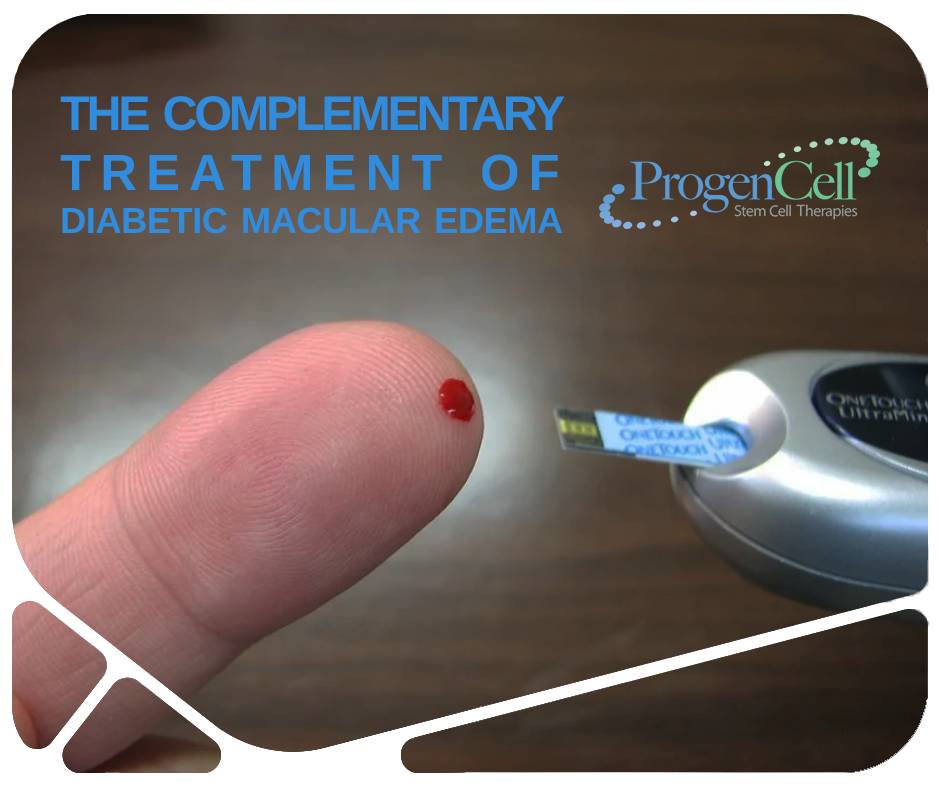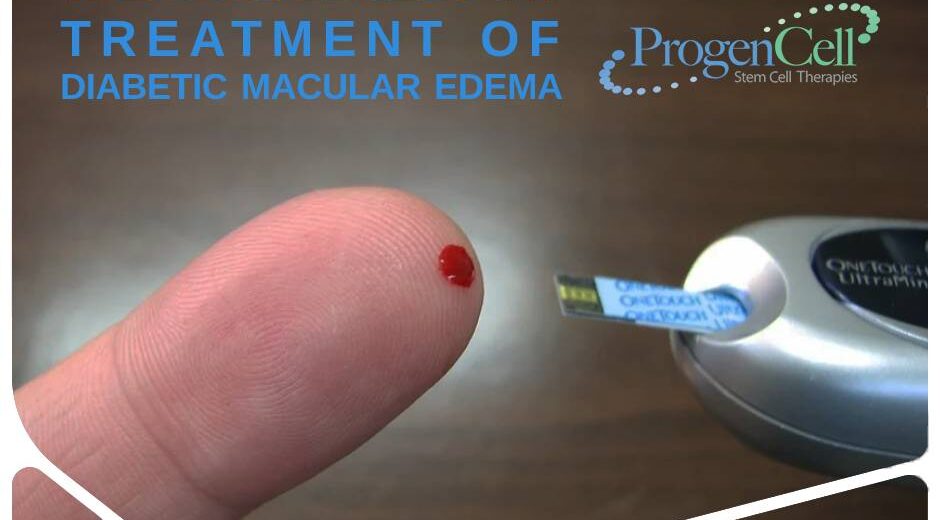
Diabetic Macular Edema is a complication of Diabetic Retinopathy, which can lead to blindness among diabetics. It is an entirely dangerous and debilitating condition, which has, in the past, required harsh, painful treatments. But, thanks to the great advances in medicine Stem Cell Therapy is here to help.
Sometimes, when a person has Diabetes Mellitus (or simply diabetes,) the body produces Vascular endothelial growth factor (VEGF.) which is a protein that usually stimulates the growth of new blood vessels after an injury or the growth of muscle after exercise has been performed.
In the case of diabetics, the overexpression of this protein might also lead to vascular disease in the retina. This results in the growth of abnormal blood vessels underneath the retina, which are prone to breaking and leaking fluid into the eye. This fluid leads to swelling of the retinal cells, damaging retina, and ultimately, vision loss.
Your chances of developing retinopathy are higher when you have suffered with diabetes for a long time, have not properly controlled your diabetes, or you have high blood pressure or high cholesterol.
Other problems for people with diabetes can include Cataracts (clouding of the eye’s lenses), Glaucoma (blurry vision due to fluid leakage in the retina) or Retinal detachment (scarring that may cause part of the retina to pull away from the back of the eyeball).
In the past, there have been limited treatments for the unwanted effects of VEGF upon the retina, painful injections or laser surgery. When talking about medications to treat macular edema, one of three medicines are inject (via needle) into the eye. These are: Aflibercept (Eylea,) Bevacizumab (Avastin,) or Ranibizumab (Lucentis.)
The side effects of Aflibercept are blindness, bloody eye, redness in or around the eyes, pain in the eyes, seeing flashes, sparks, or a veil/curtain over vision, floating spots before the eyes, or changes in vision. Other medical problems exacerbated by the medicine can be blood clots, detached retina, Endophthalmitis, inflammation of the eye, Glaucoma, pressure in the eye, heart attack or stroke.
The side effects of Bevacizumab are black tarry stool, body aches and pains, burning, tingling numbness in the extremities, chest pressure, discomfort and tightness, cloudy urine, cracks in the skin, decreased urination, and problems breathing.
This medicine may also affect angina (chest pain), bleeding problems, blood clots, diabetes, esophagus problems, heart attack, heart failure, hypertension, kidney problems, liver problems, protein in urine, stomach or bowel problems, stroke, wound healing, or hemoptysis. It may even complicate recovery from surgery. In fact, it may make these problems or their related risks even worse.
Yet, by far, the worst list of side effects come with Ranibizumab. Common side effects include back pain, difficulty having bowel movements, muscle stiffness, joint problems, blindness, bloody eyes, blurred or loss of vision, disturbed color perception, eye pain and dizziness/double vision. Less common side effects include body aches, chills, difficulty breathing, fainting, loss of consciousness even irregular heartbeat.
When taking these medications, you will generally have to undergo through those treatments every month for the first six months. So, not only do you have to suffer through the treatment itself, but you also have to be alert to any of the debilitating side effects.
Other treatments may be less painful (but less effective) like Corticosteroids, laser surgery, or NSAID (Non-steroidal anti-inflammatory Drugs). These can cause a range of side effects, including swelling of the tongue, face, eye areas, lips, hands, feet, ankles or legs; red peeling skin, bloody or cloudy urine, chest pain and trouble breathing.
The use of NSAIDs is not recommended for women in the third trimester of pregnancy. In other words, along with all of the side effects, there are many limitations to the drugs.
But rejoice: the cavalry has arrived! Stem cell treatment is the most promising long-term solution rather than monthly treatment. Stem cell treatments have no side effects or bodily rejection.
So, how do they work? Well, healthy individuals and Hematopoietic stem cells (HSC,) constantly regenerate our blood cells, enabling self-renewal as well as the production of mature blood cells. Examples of these mature blood cells include the erythrocytes, leukocytes, platelets, and lymphocytes cells. Our bone marrow generates these stem cells, and release them into the blood stream.
And the beauty of it all? The stem cells that are used are taken your own body. That’s right. No side effects from steroids. No painful injections of irritating eye medication. Just stem cells taken from your own body.
If you or a loved one wants to know more about the possibilities of stem cell treatment for Diabetic Macular Edema contact us at +1 (888) 443 6235 or info@progencell.com
In Progencell, we are specialists in a variety of treatments, such as stem cell treatment for eyes, stem cell therapy for rheumatoid arthritis, stem cells for knees, stem cell therapy for COPD in Mexico, stem cell treatment for diabetes, stem cell therapy for parkinson’s, stem cell therapy for alzheimer’s, anti aging, neurological and immunological conditions, and more.










